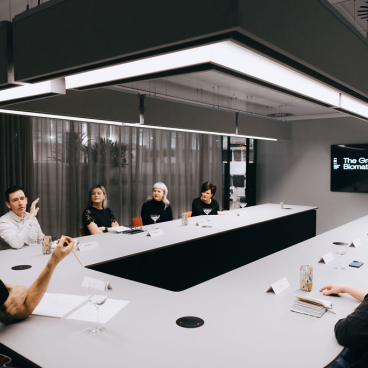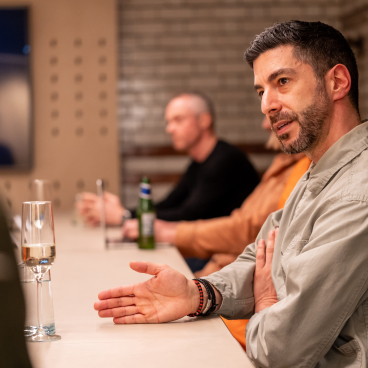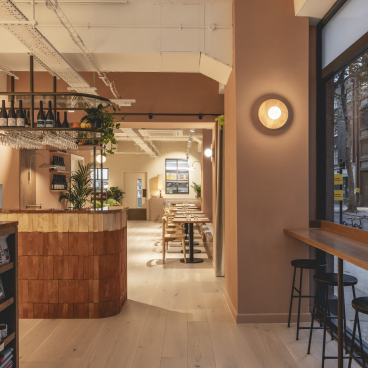Material Source Studio Glasgow Presents: The real cost of sustainability.
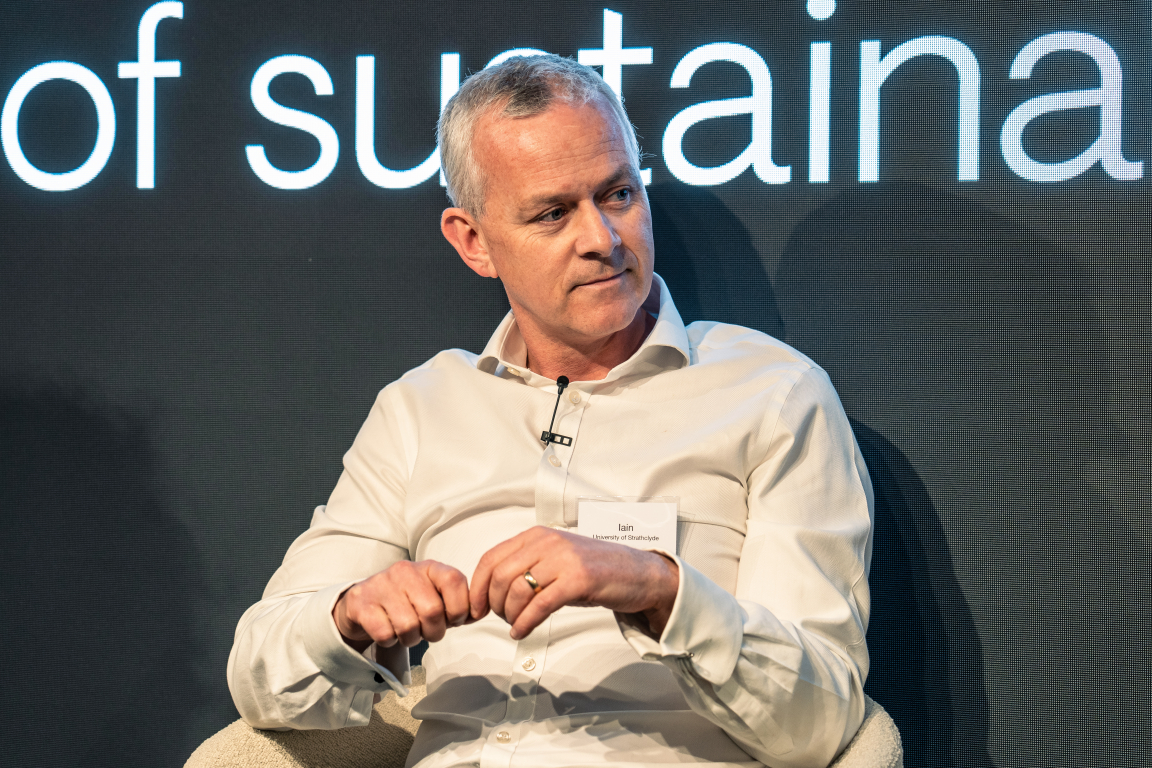
Credit: Tim Ainsworth
"This is an emergency. And we have to act like it's an emergency", came the stark reminder from panellist Iain Black, professor of sustainable consumption at the University of Strathclyde, during our first seminar of 2024 at Material Source Studio Glasgow.
"We have probably already lost the Amazon rainforest. Depending on the ongoing rate of deforestation more and more is going to tip into savannah. That's how bad things are. And we can't just bumble along", he added. "We need to do things dramatically different."
Furthering our ongoing conversations around the complications that seemingly orbit sustainable practice in the built environment, Iain imparted what he referred to as "the right amount of fear", in discussion with fellow panellist, Alison McRae, senior director, Glasgow Chamber of Commerce, and host David Smalley. The insight from our audience of architects and designers was also bountiful - their passion in regards to this topic palpable.
Much crossover was shared between this session, and our seminar and roundtable in Manchester. And though the challenges remain stubborn, and the hurdles high, with a fervent focus on action, "hope" prevailed as the word of the hour.
Imperatives to action
David asked the panel, "Environmental action usually happens for one of three reasons: regulation, commercial gain, and moral obligation. From the conversations you're having with the people you work with, where do they sit on that list? And has this changed?"
As part of the Climate Solutions Network - an online training course which Iain runs, there are four imperatives to action. "You might not believe or care that climate change is happening but there is sufficient regulation and legislation now that if you want to do business with the Scottish government - or any public sector organisation - you need to take this seriously. The second one is economic - and that can be both positive or negative - there is money for opportunities, but also a lot of money to be wasted.
"And as well as moral and ethical reasons, there is also a personal factor for career development. Without getting educated in climate change, understanding the solutions to it, and taking steps towards action, you become irrelevant in the job market, and for promotion."
This has driven initiatives by the Chamber of Commerce, with Alison commenting, "When it comes to the jobs of the future, we don't know what half of them are going to be yet. As businesses pivot, change and redesign systems, new opportunities are coming through, and this has driven us, off the back of COP26, to get into schools and show them the possibilities for how they might make a difference" - in effect, planting the proverbial seed for disruption as early as possible.
Turning the focus back to architecture and design, David asked whether the audience had experienced their would-be recruits asking questions about climate to determine whether the practice's values aligned with their own. Edward Dymock, architect associate, BDP, answered, "sometimes" - that the process is a mutual one.
In Lorraine Robertson, director, HLM Architects' view, younger people are "so much more attuned" to the sustainability crisis. Having seen targets set and then stretched, they are keen to really make a difference. Otherwise, she comments, "there won't be a future".
So for those young people wanting to take action, what can they do? asked David. "Vote" came the audience response.
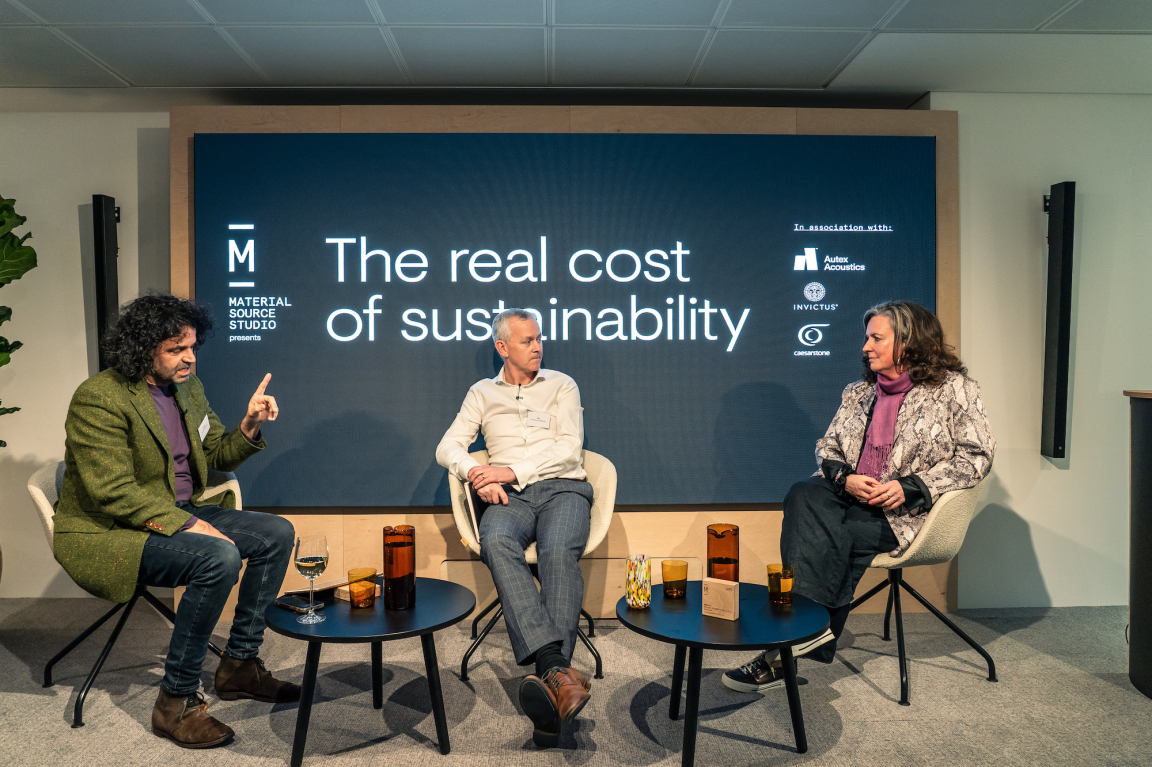
Credit: Tim Ainsworth
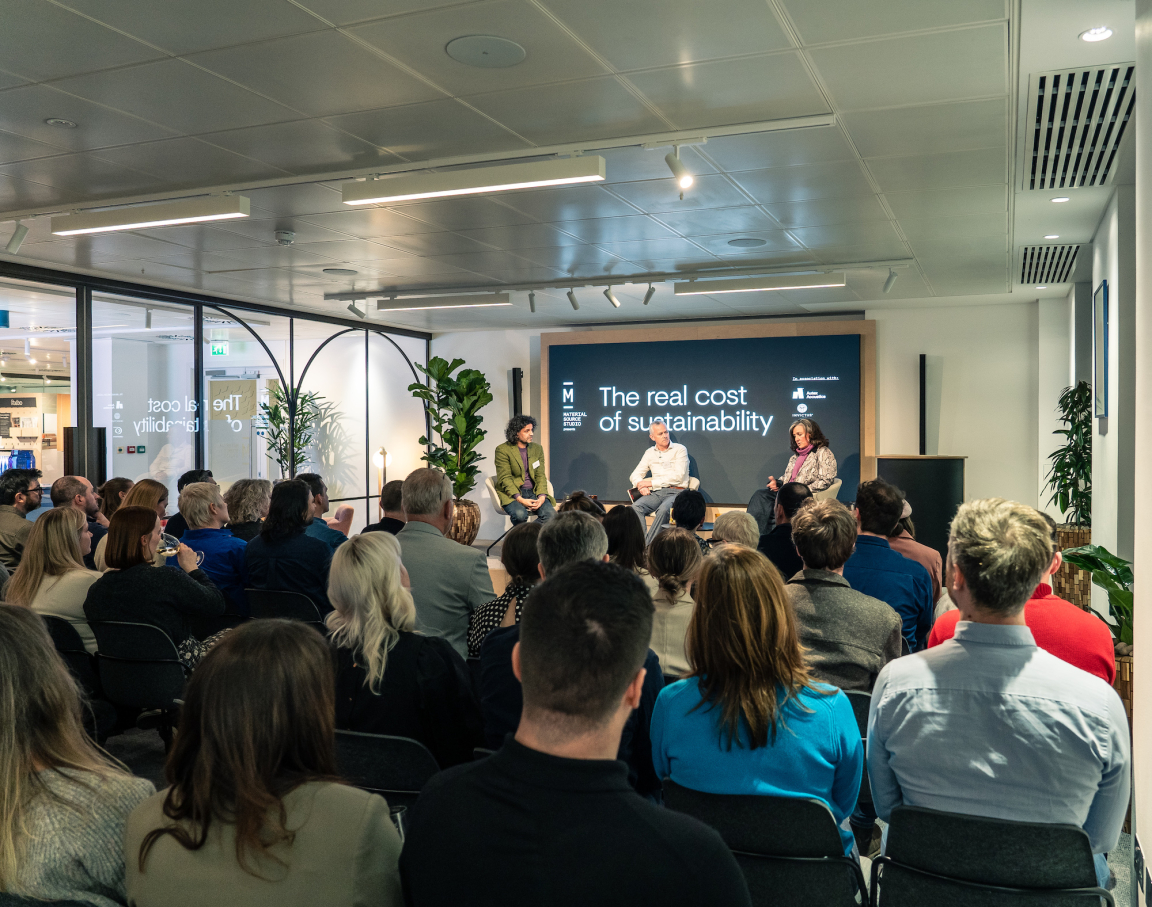
Credit: Tim Ainsworth
Care versus cost and control
We've heard in our sessions the great desire from architects and designers to do well when it comes to sustainability, but that it stops when it gets to cost control, project managers, and contractors. "So does this group of people not care about the environment?" asked David.
Met with a sea of nods from around the room, senior project manager, Jana Bartschova, commented, "Even though we as project managers are on the same page as the designers, and the sustainability consultants, because we do care, we are also an interface with the Client and know that the block can be with insurers or the funders. That's where a lot of change is needed, and they need to be brought on the journey."
This resonated with Alison, who quoted her colleague Professor Greg Clark, "insurance is the biggest change maker" - they assess risk at every stage, however "designers are disruptors. Don't be complacent", she added, "you can go in and say 'ah, but', and show different ways of doing things. Use the contacts you've got, make disruptive arguments and be bold."
This argument around the need for closer collaboration, and communication between all stakeholders was exampled by Edward Dymock of BDP, who referenced a current project by BDP's Toronto studio; a twelve storey residential scheme made from mass timber, facilitated by a refresh of Ontario’s building codes. "The legislators and insurers recognised that change was required and made it happen. At BDP, we want to knowledge-share and encourage conversation, especially if it helps change legislation." (More details on the project can be found here).
Bringing the conversation closer to home, Iain expressed that being in Scotland was "very lucky" because the legislators are close by. "None of us here are too many steps away from speaking to them." On the topic of retrofit, he made the point that land is costly, and when it comes to building better, this outlay is currently too vast - "we have a scarcity, and scarcities are expensive." So what do we do about this? "We consider the structural changes that are required to allow the building of these beautiful schemes, using amazing materials, to save them from becoming periphery" - ultimately, keeping them from the shadows of the expense put towards the land they're built on.
Continuing on the theme of sticking points, Iain shared insight from his attendance at The Global Ethical Finance Initiative (GEFI) - where it was repeatedly said by speakers from the finance sector that oil and gas must be kept in the banks' portfolios - because that's where the returns are coming from. Serving as yet another example of the attitude from some that sustainability is 'someone else's problem'.
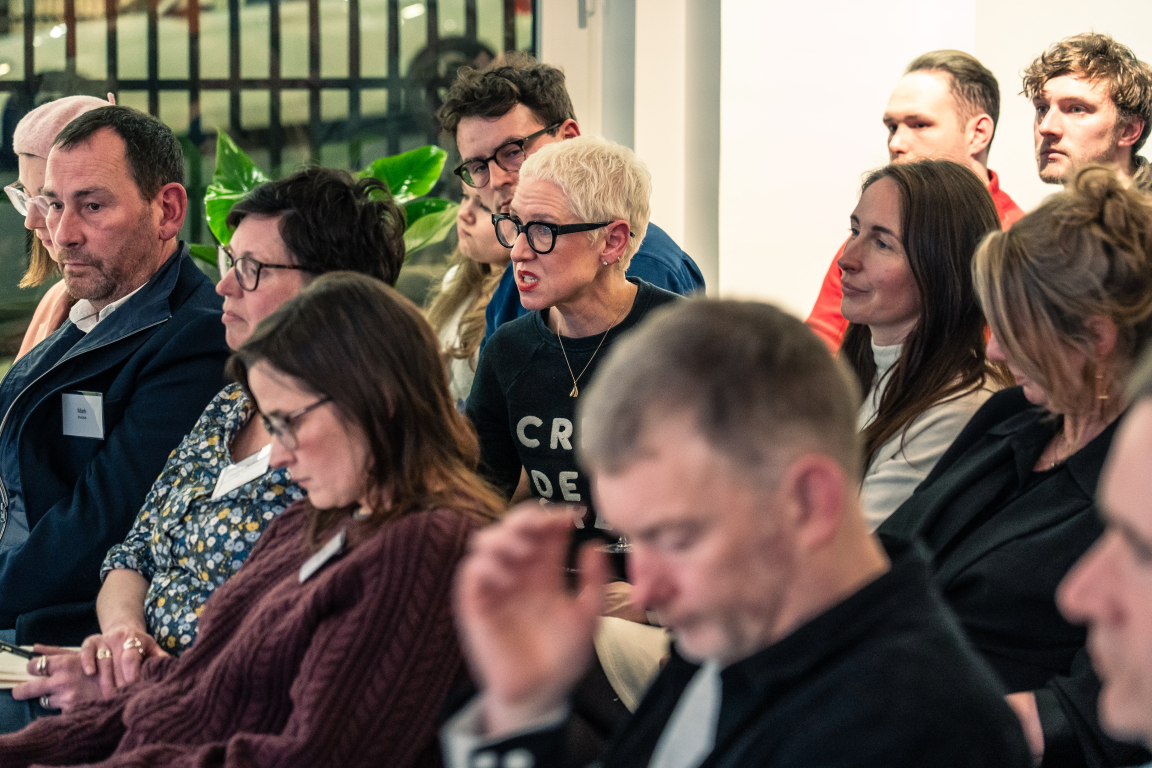
Credit: Tim Ainsworth
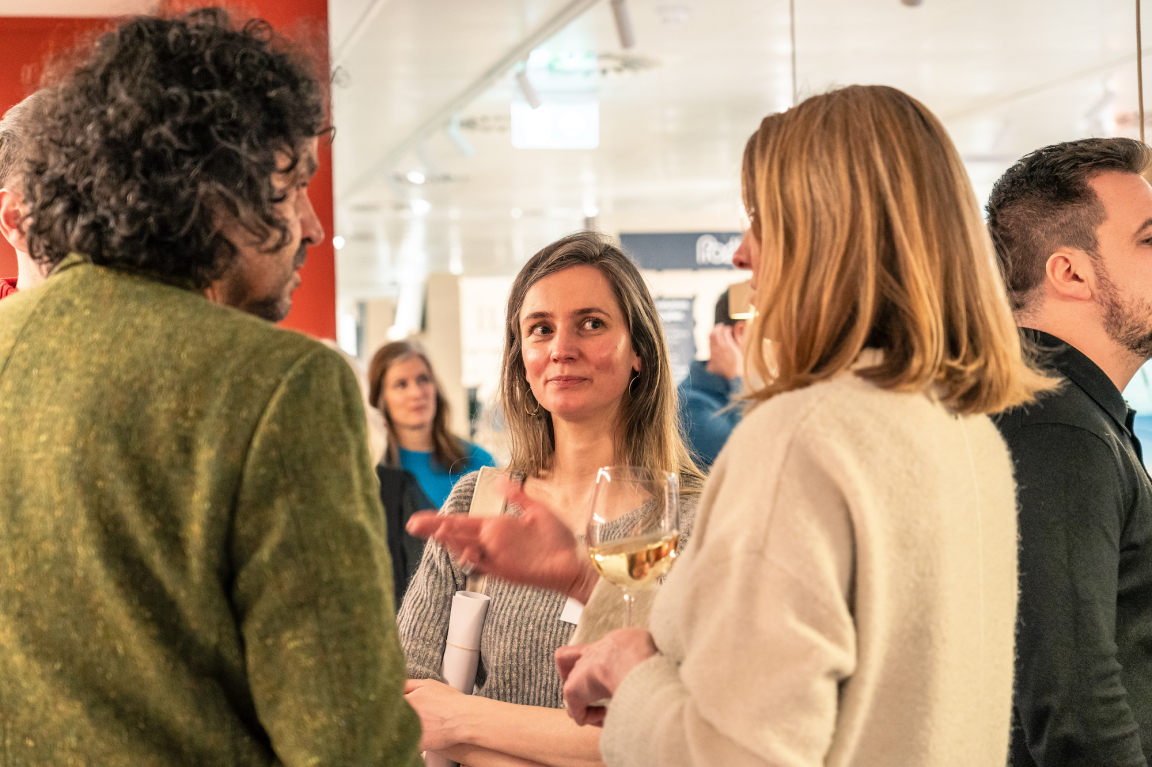
Credit: Tim Ainsworth
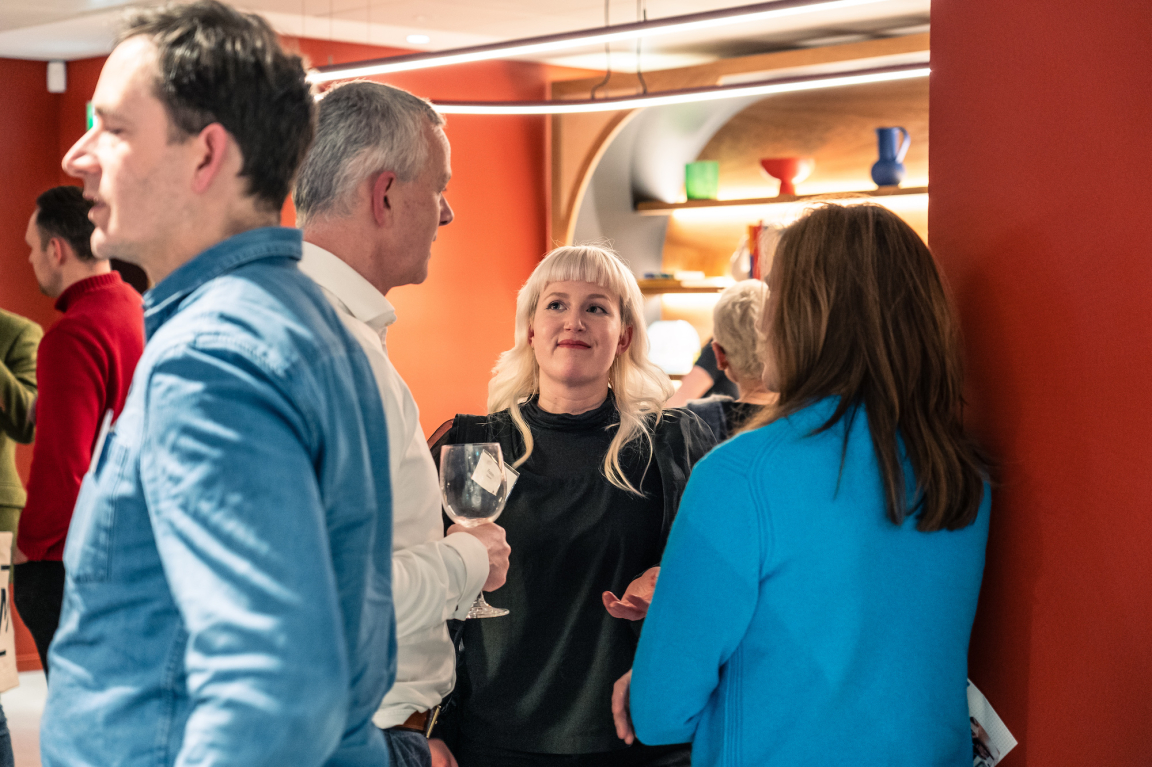
Credit: Tim Ainsworth
Shifting mindsets
Picking up on this point, Alison shared some thoughts around positive action fuelled by creativity, "Circular economy is about innovation - and that's something businesses do get excited about - as we know from our Circular Glasgow Network community - which you're all welcome to join. But this needs to be demand-led, with consumers wanting to behave in different ways.
"When talking about sustainability, it's easy to defer to doom and gloom. But as humans, we do want to travel and go to events, for example, we're wired to do these things. And so much of the conversation, as William McDonough says, is about 'the naughty step'. Who wants to get out of bed and be on the naughty step? That's why we come at this from the innovation piece. And you as designers can use this thinking to change the way things are done."
"The way you change systems quickly", added Iain, "is you change the system goal. And to do this, you need the right mindset - cognitive capacities, and knowledge. We're developing a sustainability mindset that's hopeful and entrepreneurial.
"When we talk about hope, we talk about prevention hope, and the motivation with this is the 'right amount of fear'. Too much fear and people withdraw from the situation. But there's a faithful future, and a faithful now, though it requires entrepreneurial thinking, innovation, resilience", - "and lashings, and lashings of tenacity", offered Alison.
"Plus, recognising false solutions for what they are", highlighted Iain, in reference to greenwashing.
"We live in an era of 'flat earth economics' where we seem to ignore that we live in a bounded planet with a certain amount of resources - yet we think we can grow forever, but every pound of GDP we produce uses resources from the earth."
Citing research from the Ellen MacArthur Foundation, Alison shared that the Net Zero ambition will not be realised by only shifting to renewables and clean tech - the other 45% will only be achieved around circular economy transition. "As the population increases, there will be more consumption, so I appeal to you as designers to look at consumables and consider longevity and growth prospect."
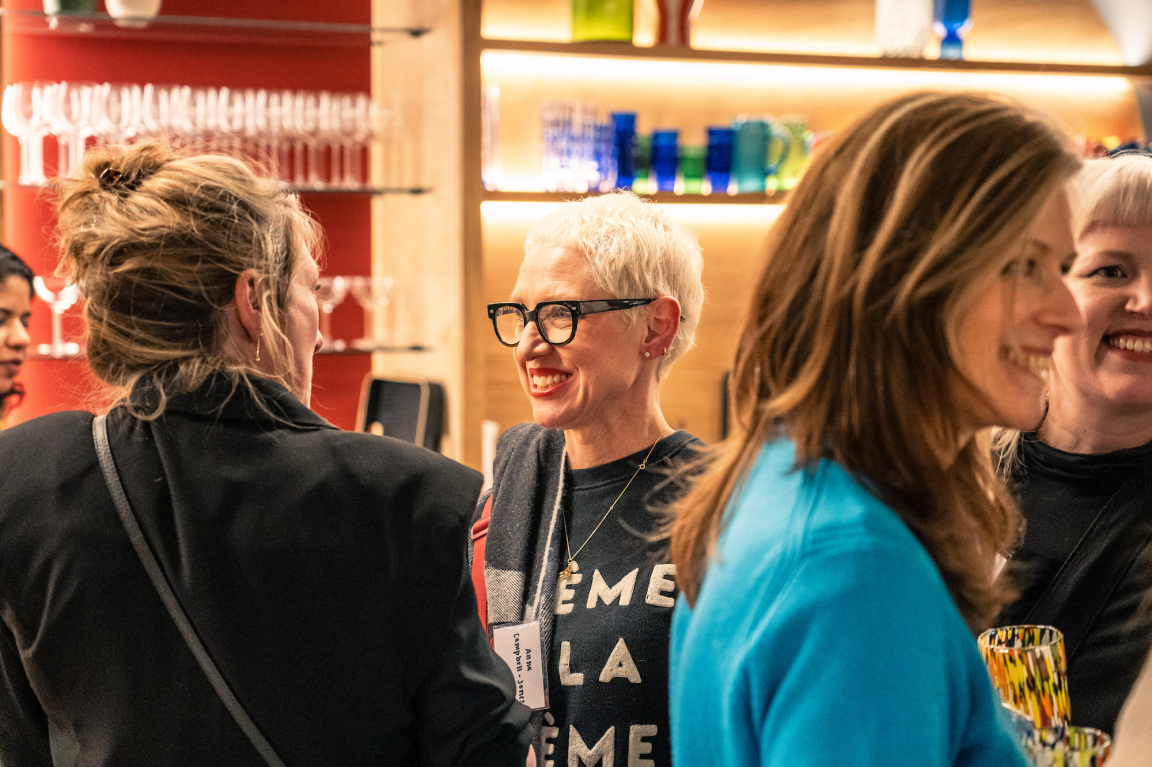
Credit: Tim Ainsworth
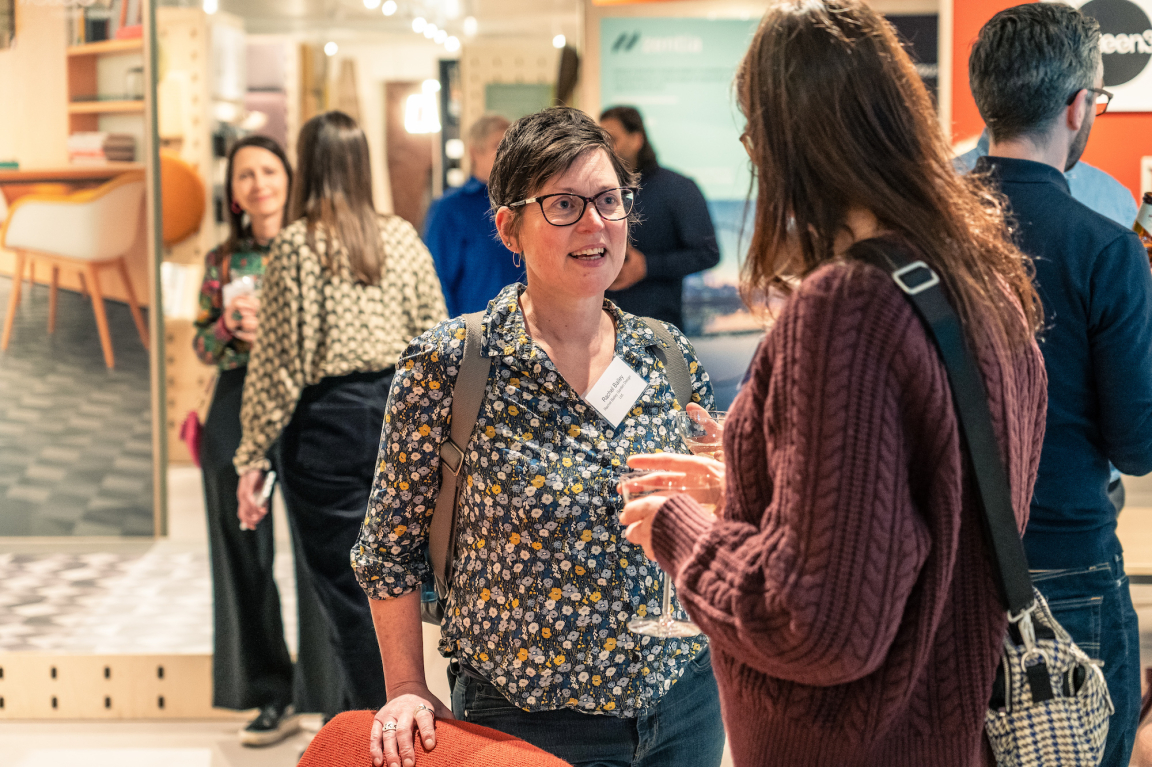
Credit: Tim Ainsworth
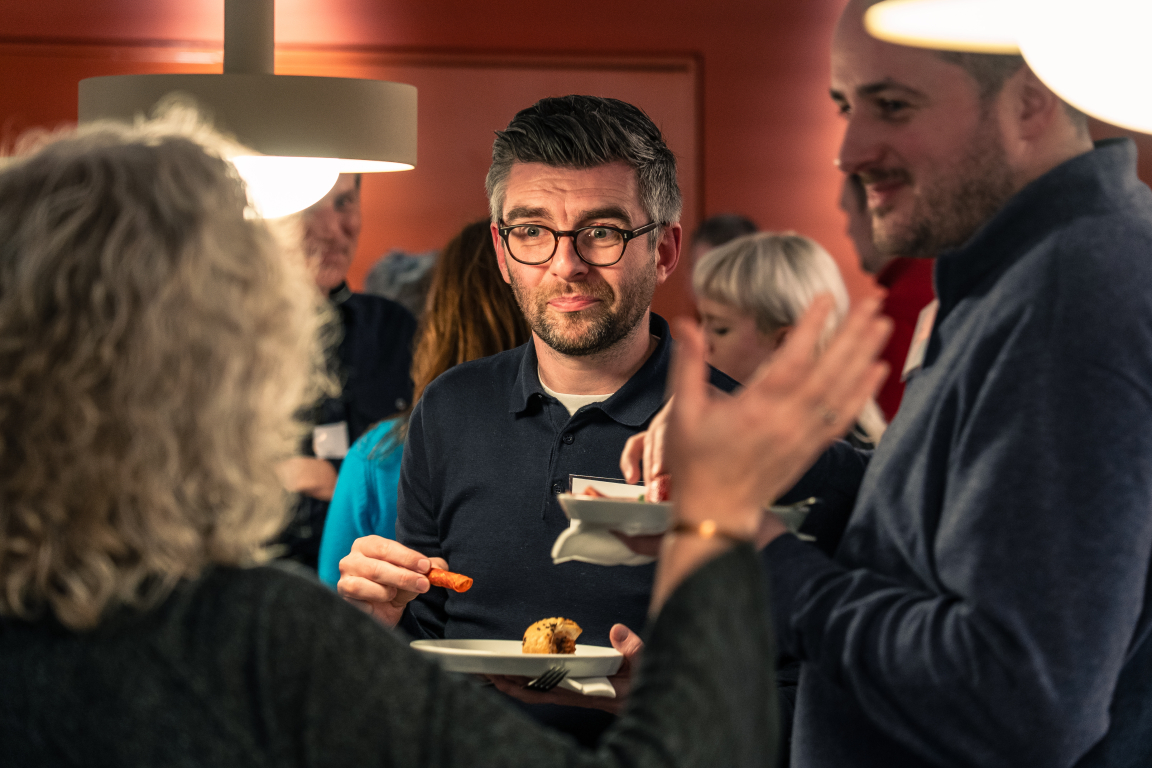
Credit: Tim Ainsworth
Do better with what we've got (and don't add more)
This idea around circular economy isn't necessarily new, of course. As Lorraine Robertson of HLM Architects pointed out from the audience - we perhaps need to "relearn what we already know", using glass bottle returns as an example of a system that worked because it benefitted both people and the planet.
Applying this to design, Alison said it's about, "designing out, designing differently and not putting more in."
Anna Campbell-Jones, designer, retailer & presenter, contemplated the "tipping point" for plastic to be considered more for reuse, in response to the wealth of plastic 'waste' that holds so much potential.
Interior designer Zoe Miller agreed, saying, "For every project we should be looking at what we can keep and reuse - we need to minimise the amount of waste going to landfill."
This prompted David to ask audience members if their clients were open to reuse, with "yes" the resounding response.
From BDP's college renovation seeing a retrofit of the existing campus rather than rebuild, to the Lush shop fit out repurposing furniture, fixtures, and fittings, and a recent workplace project outlined by Robin Ellis, architectural designer, Graven, where 80% of the furniture used was second hand - "It was a great collaboration between the whole project team" - examples were shared in abundance.
While everyone knows reuse is more environmentally responsible, the discussion moved to consider if it's enough. Iain responded with, "finding other uses is really important because it stops consumption by someone else."
One of the issues currently faced by designers and architects, as pointed out by audience member Jean Camplisson, design director, c2:concepts is the lack of a simple, universal system for measuring the sustainability of any new products specified. Edward Dymock of BDP offered a solution, based on his recent investigation into EPDs. "The data can be overwhelming but focus initially on stages A1 to A3 and B2. That covers embodied carbon for the materials' manufacture, cradle to gate, and during maintenance. Most of the material impact will often be in those stages."
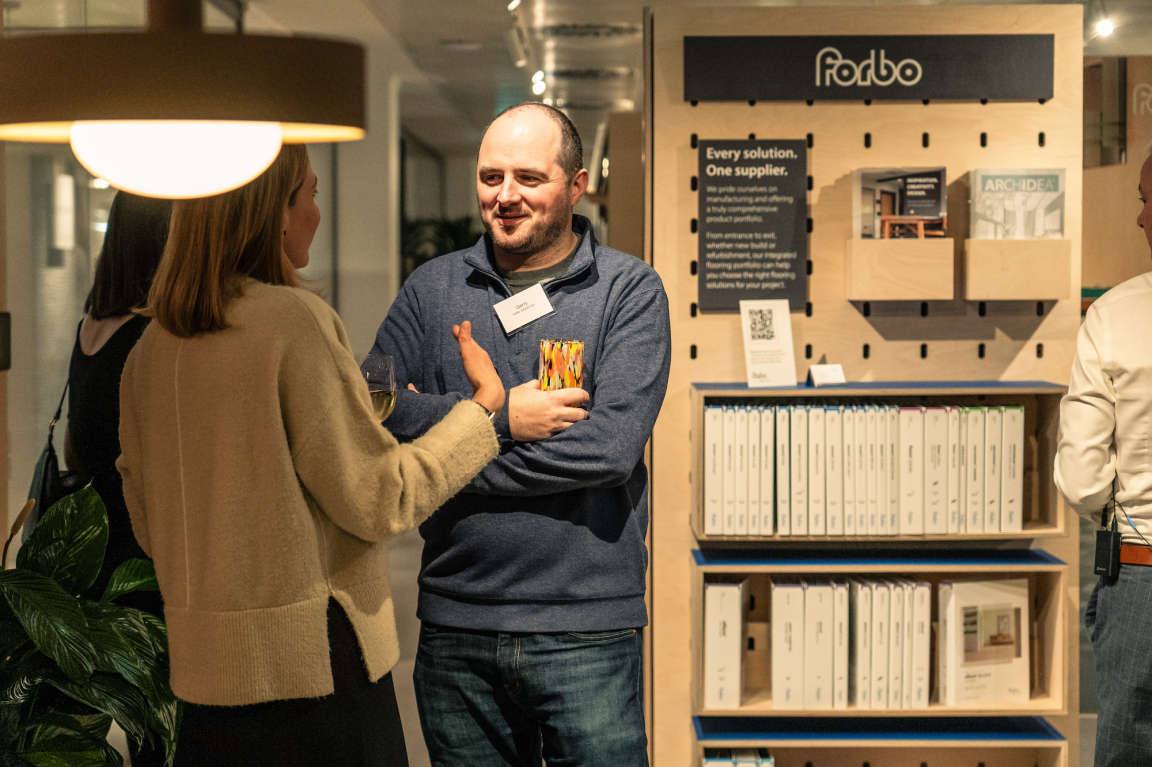
Credit: Tim Ainsworth
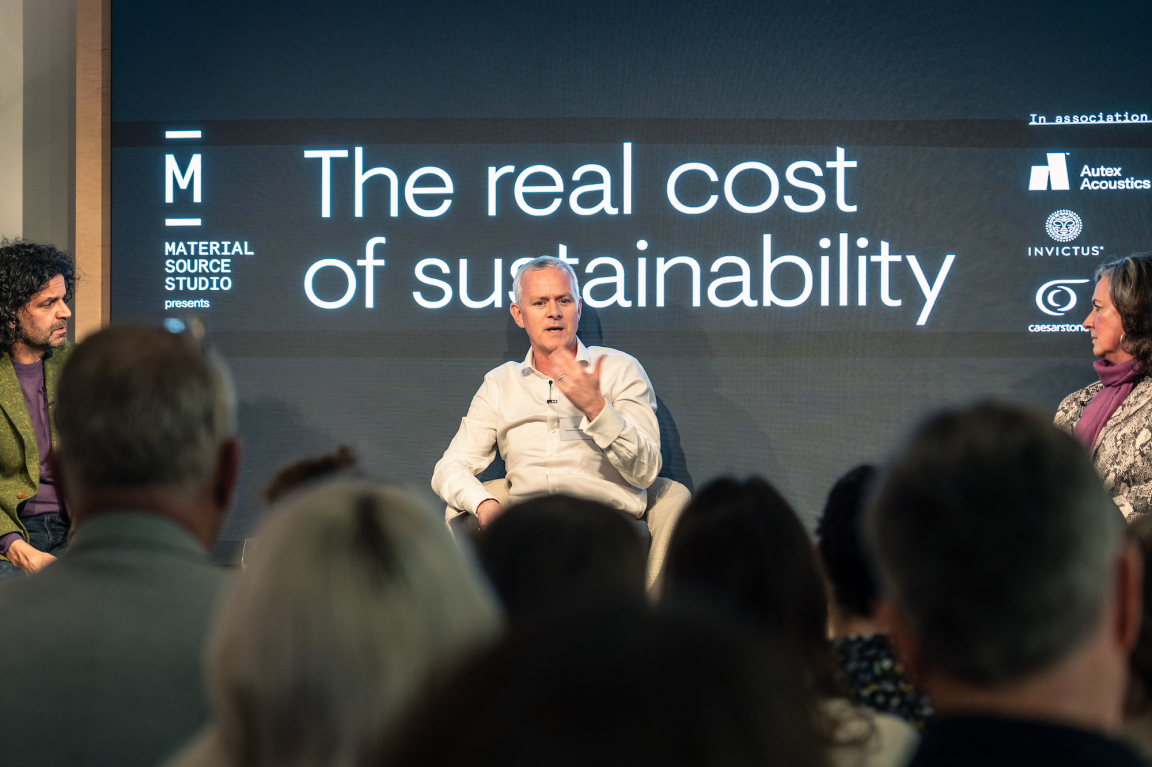
Credit: Tim Ainsworth
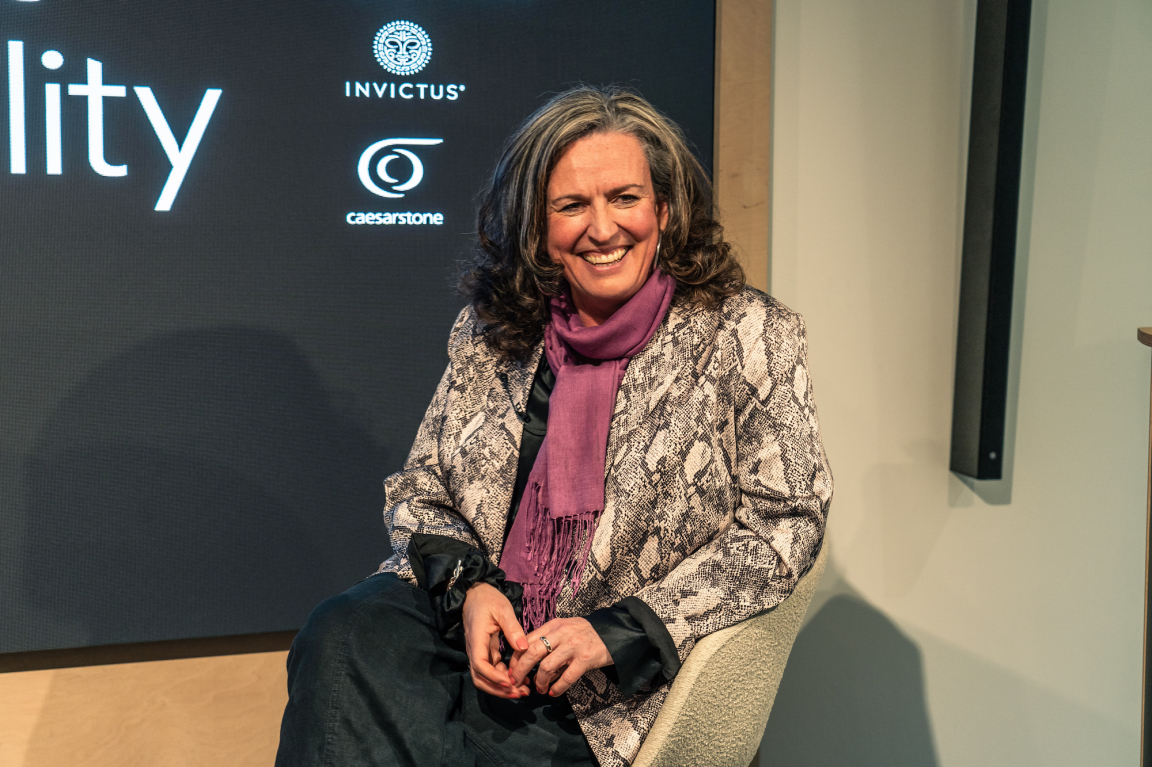
Credit: Tim Ainsworth
Inspire innovation
Bringing the session to a close, Iain left the audience with a pertinent reminder that as humans, we are more than capable of handling crises. Citing two instances - the speed of manufacturing US arms to support the WW2 efforts, and the Covid pandemic - where things were handled in a dramatically different way to successful end, he believes the same method of logic need apply to tackling the climate crisis too.
Alison seconded this, commenting, "Keep it practical and inspire others. You're all trained opportunity spotters - you can disrupt the way things are being done.
"I'm in a hope space", she added, to which David turned to the audience to ask whether they felt more positive on leaving the session than they had when they arrived. Overwhelmingly, they did. Though complex, sustainability is a human issue, but humans are innate problem solvers. "Commit to learn, communicate, and collaborate", summarised David - and continue to be hopeful.
Huge thanks to our panellists Iain and Alison; to our audience for sharing their insight and asking questions to support their fellow peers; and to our supporters for the event, Autex, Invictus & Caesarstone - all Studio partners.
For anyone looking for additional resource on the topic of climate, audience members Harriet Powell-Hall, architect, Keppie Design, and Sophie Simpson, associate director, Cundall, shared The Climate Dictionary - a useful A-Z reference of terminology.
For those interested in engaging further, Glasgow Chamber of Commerce runs Congress of Business COB – a hybrid event seeking to build on the various Glasgow Climate Pacts to enable a shift from strategies to practical action at scale through peer-to-peer learning, knowledge transfer and investment. Find out more here.
The conversation continues in our roundtable: The growth of biomaterials. Stay tuned, and join the discussion over on social media.






